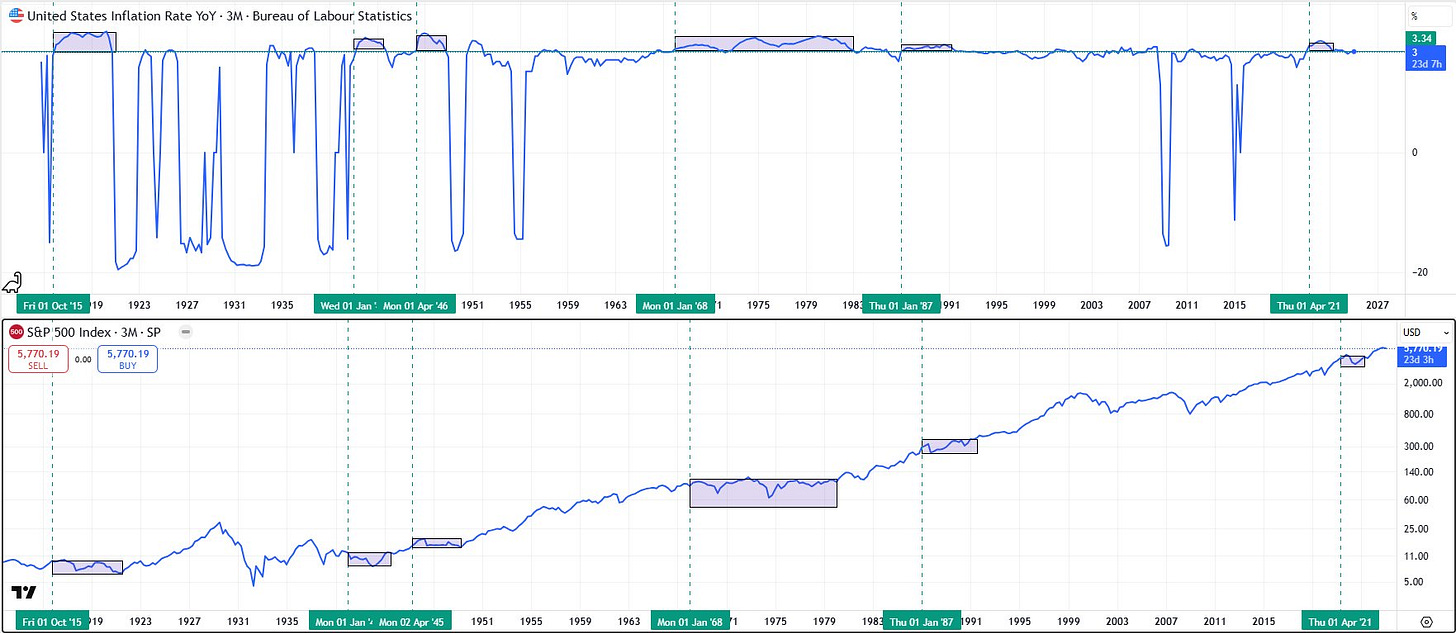It’s a good time to refine my public views on good savings portfolios in 2025.
As most of you know, you hold a savings portfolio1 for the long term with minimal adjustment. It exists to maintain and grow your wealth as much as possible in accordance with your goals and desired level of daily vitality. Ideally you only act once a year to rebalance the portfolio back to its default proportions of assets held. This successfully limits taxes to long-term capital gains. It also successfully leverages your market timing skill.2
Thus, you intend to hold a good weighting of assets for a 10-year horizon: quite a long time frame. A traditional savings portfolio many advisors approve of today is the 60/40: it rebalances to a slightly larger amount of diversified equities3 and a smaller amount of long duration bonds.4
This works well if inflation and rates are trending lower, and does not work well at all in the opposite case.
People tend to go with what has worked lately, which is reasonable and smart. It’s a process of updating inference from your ongoing sample of data: a good strategy. Enhancing your understanding with history gives you an added edge.
Many have a fixed idea in their head that “equities protect me from inflation.” This is partially a consequence of recent performance (searching for reasons to hold equities because it has worked lately) and partially because there are elements of truth to this on some time frames.
When it comes to a long-term savings portfolio, the reality is different. When you are in a regime of stable inflation (the last few decades) and move to a more inflationary period, stocks perform very poorly on the 10-year time frame. This is simply a fact.
The reason for this is that inflation increases the value of present cash relative to future cash. This is what it means for interest rates to rise. Because investing in stocks and bonds at their current valuations is investing in future cash returns, a devaluation of future cash is a devaluation of the entire 60/40 portfolio.
A wonky term for this is to say that there is a higher risk premium in all assets. This is what happens in a regime of up-trending nominal growth.
I’ll give you the upshot here before exploring more detailed ways to handle this situation behind the paywall. My current savings portfolio has less than 20% exposure to U.S. stocks and bonds. If you’re data-driven you know that BTC has traded with high correlation to a 3-4x levered S&P its entire large, liquid market cap lifetime. So crypto is out as well.
If I own crypto, it’s as a shorter-term trade. If you believe we are entering a new regime of higher inflation, holding more than 10% allocation of crypto in your savings portfolio is not wise.
The only simple popularly-owned diversifier that works in these conditions is gold. Owning lots of exactly one commodity is much too concentrated for an intelligent savings portfolio. I have around 30% of my savings portfolio in gold.
The asymmetric level up in these situations is to have exposure to a reliable stream of hedge fund returns. When you’re talking about a sideways market like the 70s with bonds trending cheaper in price,5 you need something that can go short equity markets and bond markets to get the steady compounding you desire in your savings portfolio. I have about 80% allocation to hedge fund return streams in my savings portfolio currently.
We’ll get into details behind the break.





